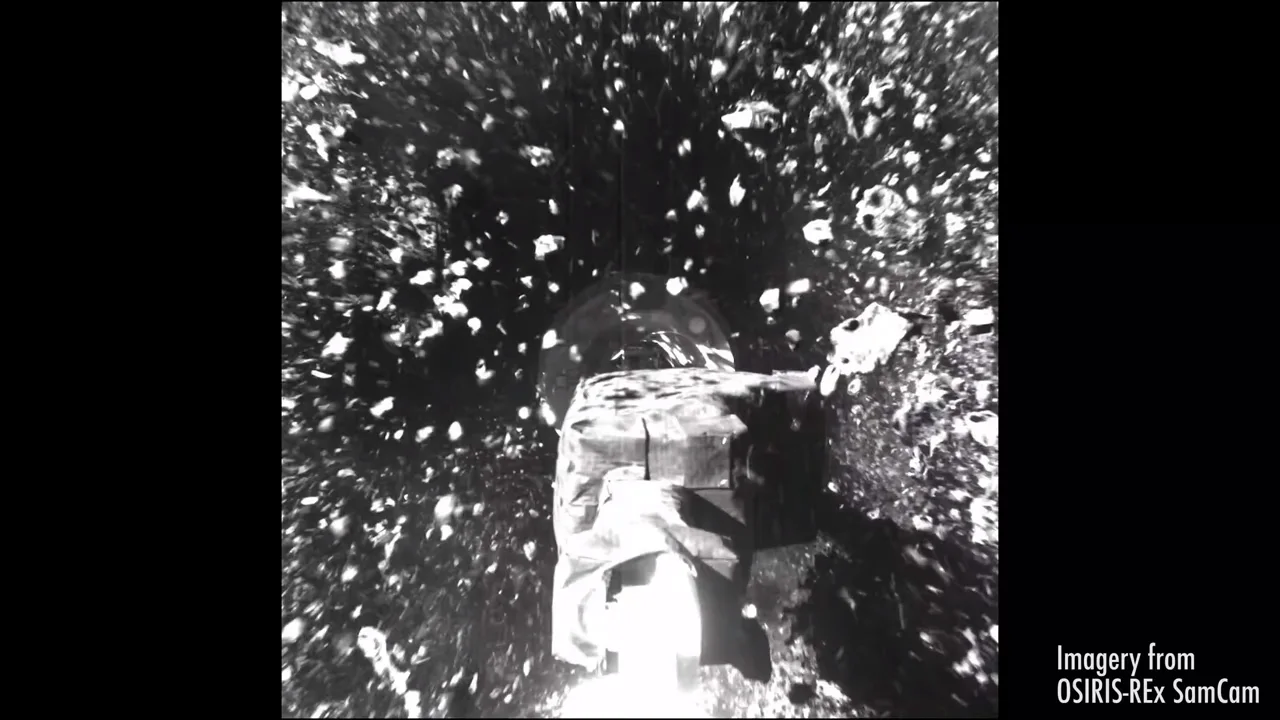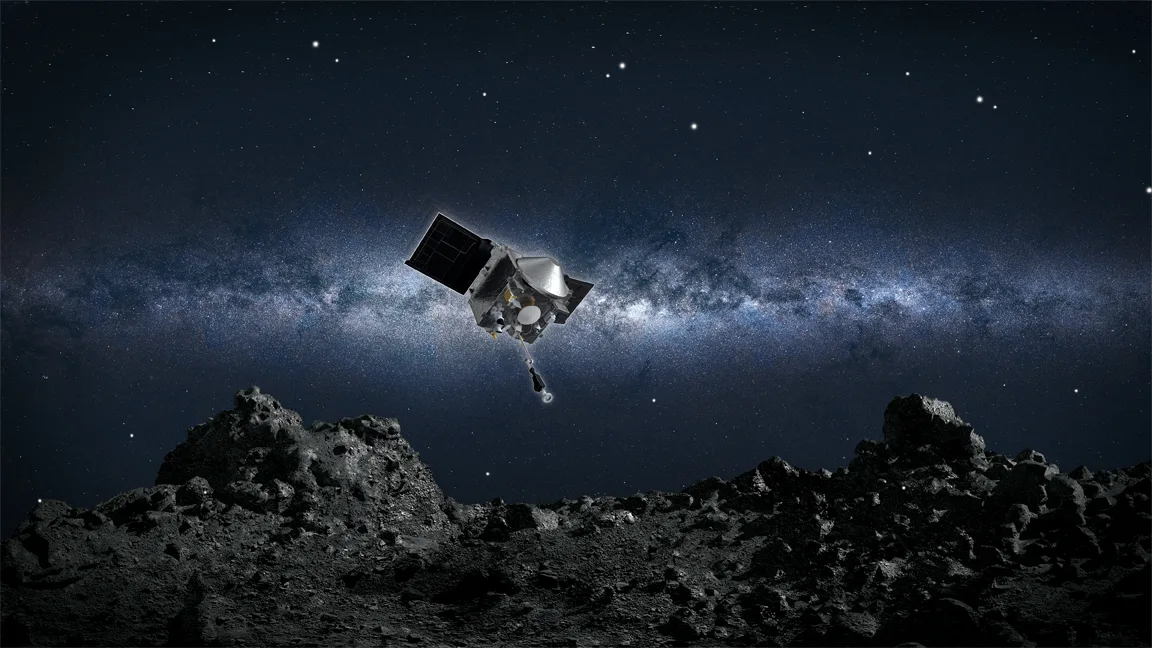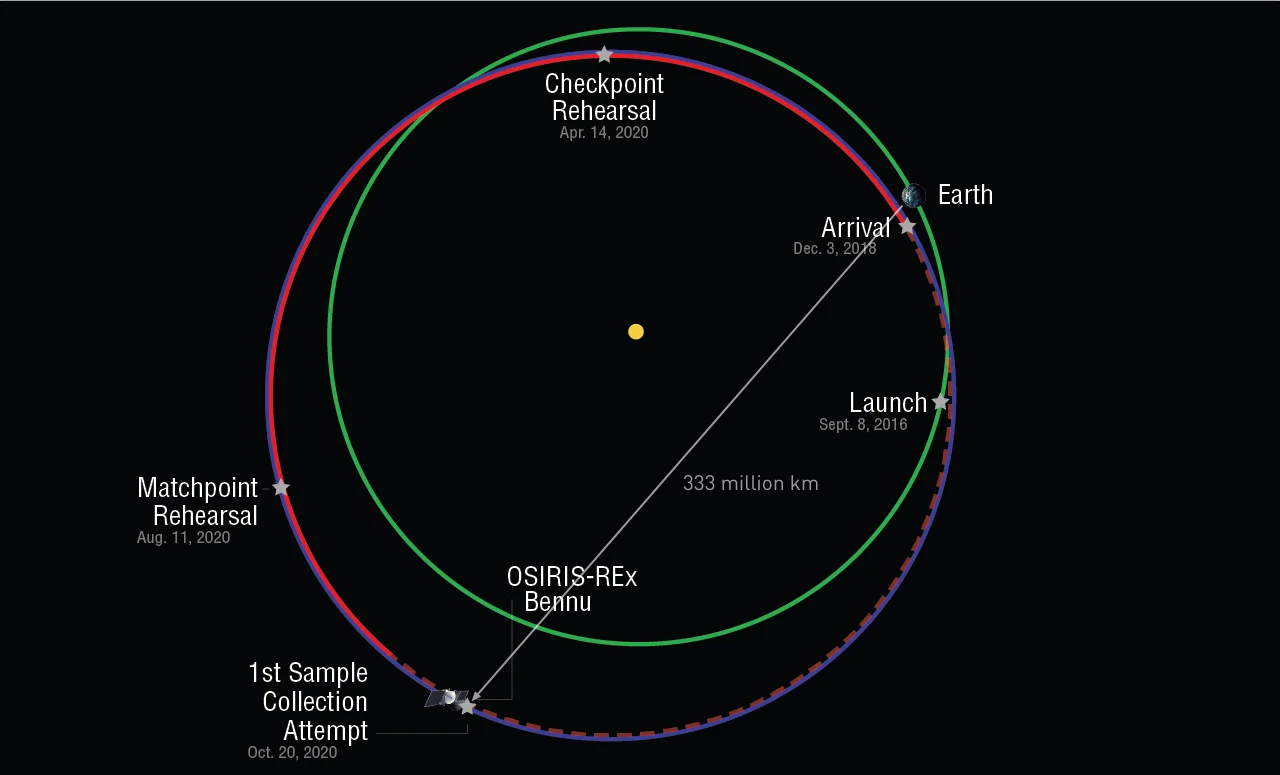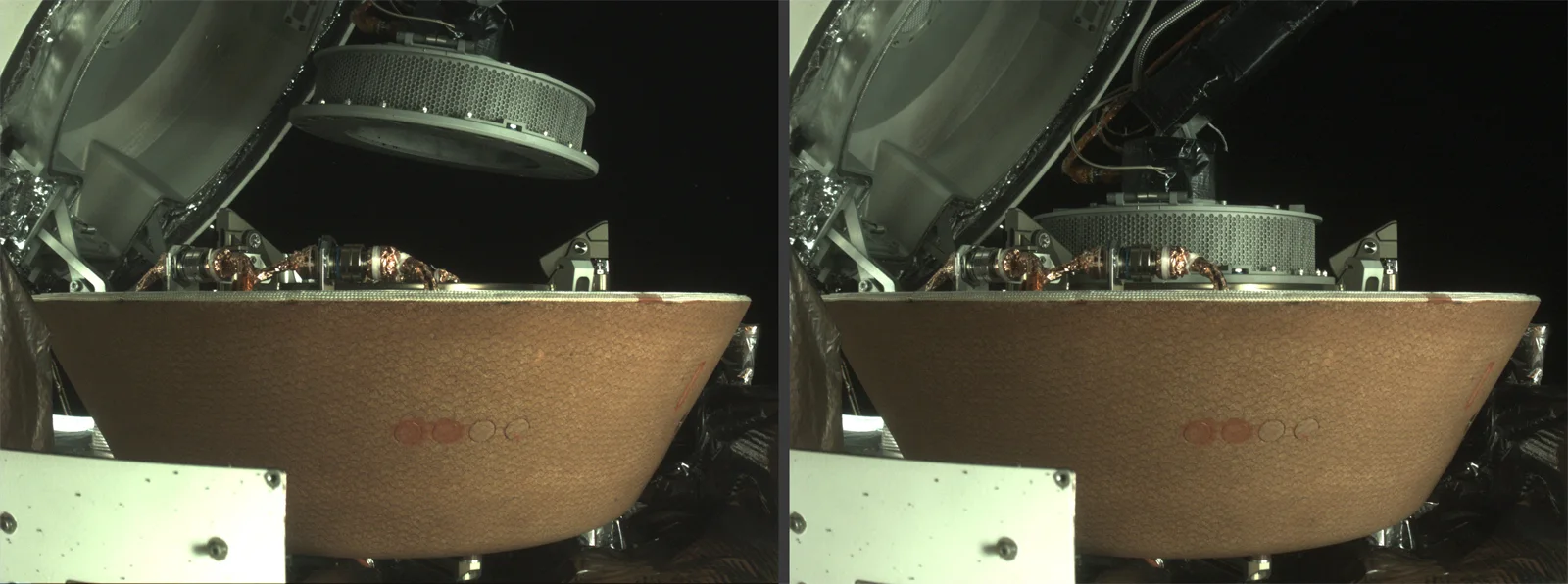
Check out our first real look at OSIRIS-REx's touch-and-go on asteroid Bennu
We had to wait for a real look at this, but it was definitely worth it!
When a NASA spacecraft tapped down onto an asteroid earlier this week, we had only computer simulations to watch during the event. Now, with the success of this vital mission milestone, we get to see what really happened.
On Tuesday, October 20, at around 6:08 p.m. EDT, for the very first time, the OSIRIS-REx spacecraft touched asteroid Bennu in a region near its north pole, known as Nightingale. For six seconds, the probe's sample collection head rested on the surface of this 'rubble pile in space'. It then blasted out a puff of pure nitrogen gas to force material up into the collector before the spacecraft backed away again to assess its success.
When this was all going on, NASA and the mission team at Lockheed Martin were only able to show us a simulated look at the action.

This artist's rendering shows the spacecraft on approach to touchdown for sample collection. Credit: NASA/Goddard/Univesity of Arizona
This was based on artist renderings of the spacecraft, coupled with digital images of the asteroid's surface that OSIRIS-REx has been collecting for well over a year now. We got to share in the mission team's trepidation as the probe approached its target and their joy when the spacecraft reported its success. However, we didn't get to see what was really happening.
OSIRIS-REx's cameras were not sitting idle, though. Throughout the entire maneuver, the spacecraft was snapping pictures that it would eventually send back to Earth. The first shots we have been treated to are from SamCam, the camera mounted on the sample collection arm, as it had the most direct view of the action.
Watch below to see what OSIRIS-REx's SamCam captured during the "Touch and Go" maneuver
According to NASA:
The spacecraft's sampling arm — called the Touch-And-Go Sample Acquisition Mechanism (TAGSAM) — is visible in the lower part of the frame. The round head at the end of TAGSAM is the only part of OSIRIS-REx that contacted the surface during the sample collection event. In the middle of the image sequence, the sampling head positions itself to contact the asteroid's surface head-on. Shortly after, the sampling head impacts site Nightingale and penetrates Bennu's regolith. Upon initial contact, the TAGSAM head appears to crush some of the porous rocks underneath it. One second later, the spacecraft fires a nitrogen gas bottle, which mobilizes a substantial amount of the sample site's material. Preliminary data show the spacecraft spent approximately 5 of the 6 seconds of contact collecting surface material, and the majority of sample collection occurred within the first 3 seconds.
WATCH BELOW: TOUR ASTEROID BENNU WITH NASA
WHY NO LIVE SHOTS FROM BENNU?
Presenting the details of a space mission to the public is not an easy task.
There's so much cool stuff going on in this incredibly remote part of space. You not only want to see it yourself, but you also want to treat the viewing public to a look as well. However, your spacecraft is solely focused on the task at hand, and that task could go very wrong at any moment due to any number of unforeseen circumstances. Dedicating any of the probe's precious radio bandwidth to sending back live pictures could cause you to miss some critical bit of information.
This infographic details the Natural Feature Tracking OSIRIS-REx uses to navigate safely to the surface and back during this TAG maneuver. Credit: NASA/Goddard/University of Arizona
With the outcome of this delicate touch-and-go maneuver at stake, and possibly even the survival of the spacecraft, the unfortunate reality was that the need for live images had to be sidelined.
At the same time, even if you could spare the radio bandwidth, the very nature of the universe itself conspires to limit your ability to see what's going on in real-time. The speed of light is fast - the fastest speed in the universe, at nearly 300,000 km/s, in fact. Even it becomes a limitation when your spacecraft is millions of kilometres away, though.
In this case, OSIRIS-Rex and asteroid Bennu are over 330 million kilometres away from Earth. At that distance, sending a radio signal one way takes around 18 minutes to arrive. Imagine trying to have a conversation when just exchanging "Hi"s takes over half an hour.

This diagram of Bennu & OSIRIS-REx's orbit compared to Earth's orbit shows the location of the pair during the TAG maneuver - over 333 million km away. Credit: University of Arizona
So, while this sample collection maneuver was taking place, the mission team was just as much a spectator group as the viewing audience. They had programmed the spacecraft, to the best of their ability, to perform the maneuver all on its own. Then, when the time came, all they could do is sit back and receive the updates from OSIRIS-REx as they came in.
Even at 5:50 p.m. EDT, they had to sit with the knowledge that the spacecraft had already touched the surface of Bennu. They wouldn't receive confirmation that it succeeded until 6:08 p.m., though.
Have you heard of the "7 minutes of terror"? Back when the Curiosity rover landed on Mars, in 2012, just by looking at the clock, the mission team knew that the rover had already landed. What they didn't know was, if it survived the landing or if it was scattered in a million pieces across the local landscape. They had to wait a nerve-racking 7 minutes to know for sure. In this case, during sample collection, the OSIRIS-REx team had 18 minutes of terror!
Fortunately, everything appears to have gone exactly as planned, and the sample arm tapped down within 1 metre of their intended target! Not bad for a spacecraft flying around a rotating object, operating entirely on its own, over 330 million km away!
UPDATE
On Friday, October 23, The OSIRIS-REx mission team reported that sample collection had actually gone better than anticipated. However, this success was also causing a very noticable problem.
They had collected such a large sample that it was actually too much for the collector head to contain! Images from the spacecraft revealed that some of the sample was escaping back into space.
The original sample collection plan called for the spacecraft to stow the collection head into the spacecraft on November 2. Given this new development, however, the mission team decided to move the schedule up. Working around the clock to update OSIRIS-REx's timetable, the team managed to complete the process on the very first try, on Tuesday, Oct 27.
New images now show the sample successfully stowed for its return to Earth, and the Sample Return Capsule was then closed the following day.

On the left, the OSIRIS-REx collector head hovers over the Sample Return Capsule (SRC), as the Touch-And-Go Sample Acquisition Mechanism arm positions it for capture. On the right image, the collector head is secured onto the capture ring in the SRC. Credits: NASA/Goddard/University of Arizona/Lockheed Martin
